How to Get the Best Travel Plan Data Scraping Skyscanner Flights Data?
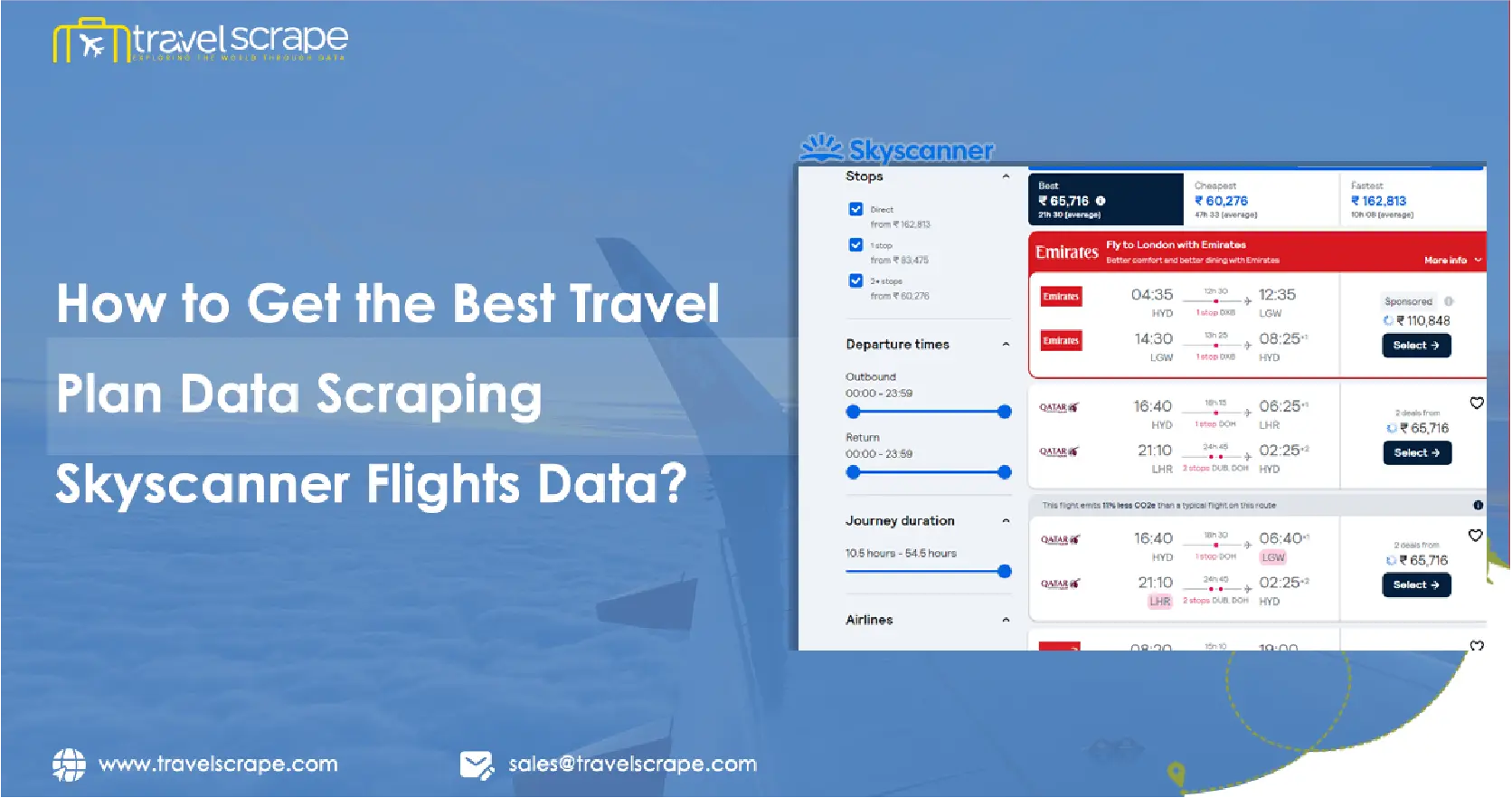
Introduction
In today's fast-paced digital age, travelers are increasingly relying on online tools and platforms to plan their journeys. Skyscanner, a leading travel aggregator, is one such platform that provides users with comprehensive data on flights, hotels, and car rentals. For businesses and tech enthusiasts interested in harnessing this valuable data, web scraping presents a powerful solution. This detailed guide will delve into the process of scraping Skyscanner flights data, leveraging Skyscanner scraping APIs, and utilizing the collected data to create the best travel plans.
Understanding Skyscanner and Its Importance
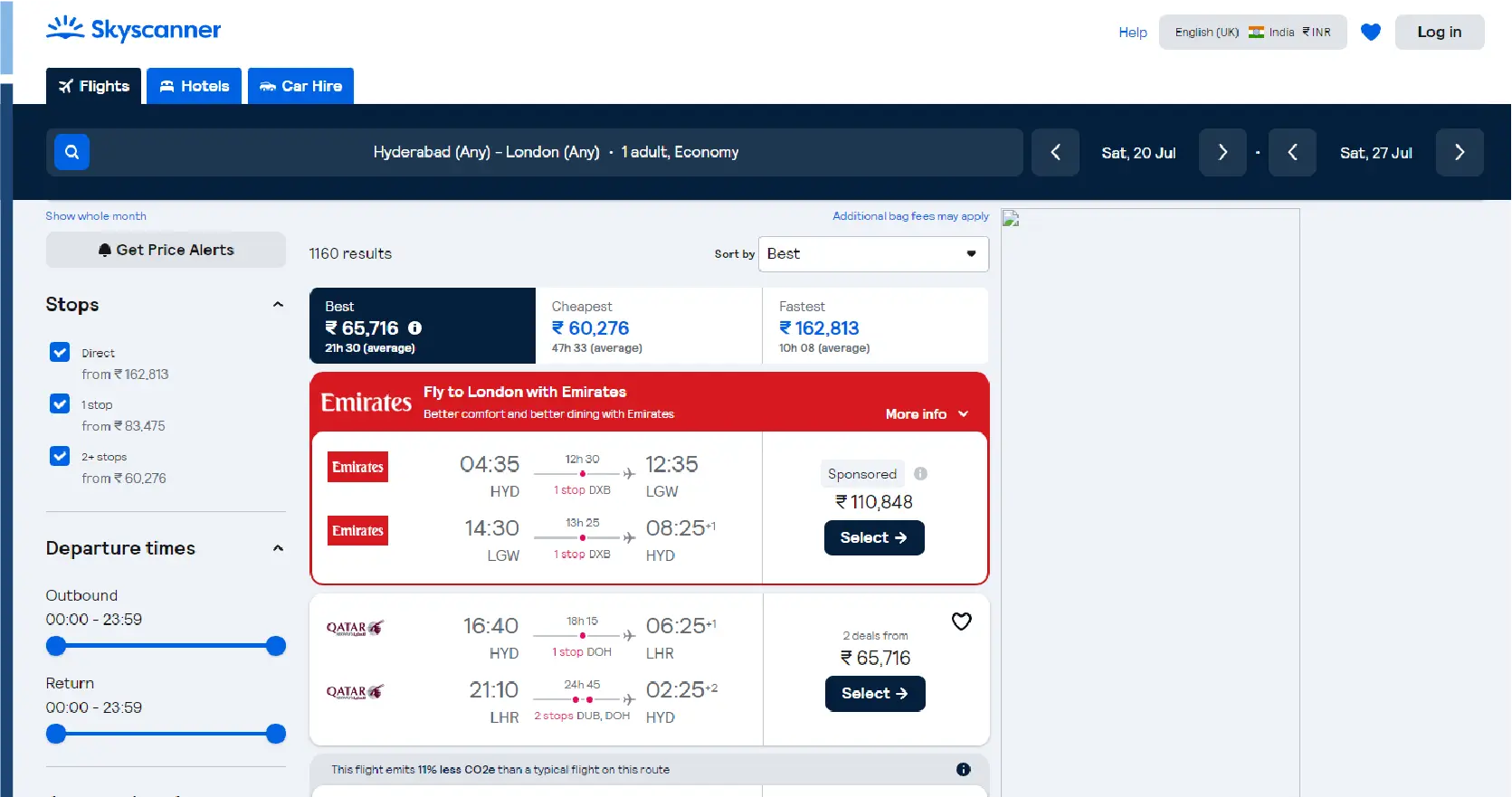
Skyscanner is a premier travel aggregator that simplifies travel planning by providing comprehensive data on flights, hotels, and car rentals. It allows users to compare prices across various airlines and booking platforms, ensuring they find the best deals. Skyscanner's real-time updates and extensive database make it an invaluable resource for travelers seeking to optimize their plans. Businesses and analysts can leverage this data to perform competitive analysis, monitor pricing trends, and gain insights into market dynamics. With its user-friendly interface and powerful search capabilities, Skyscanner stands as a crucial tool in the travel industry.
The Need for Scraping Skyscanner Flights Data
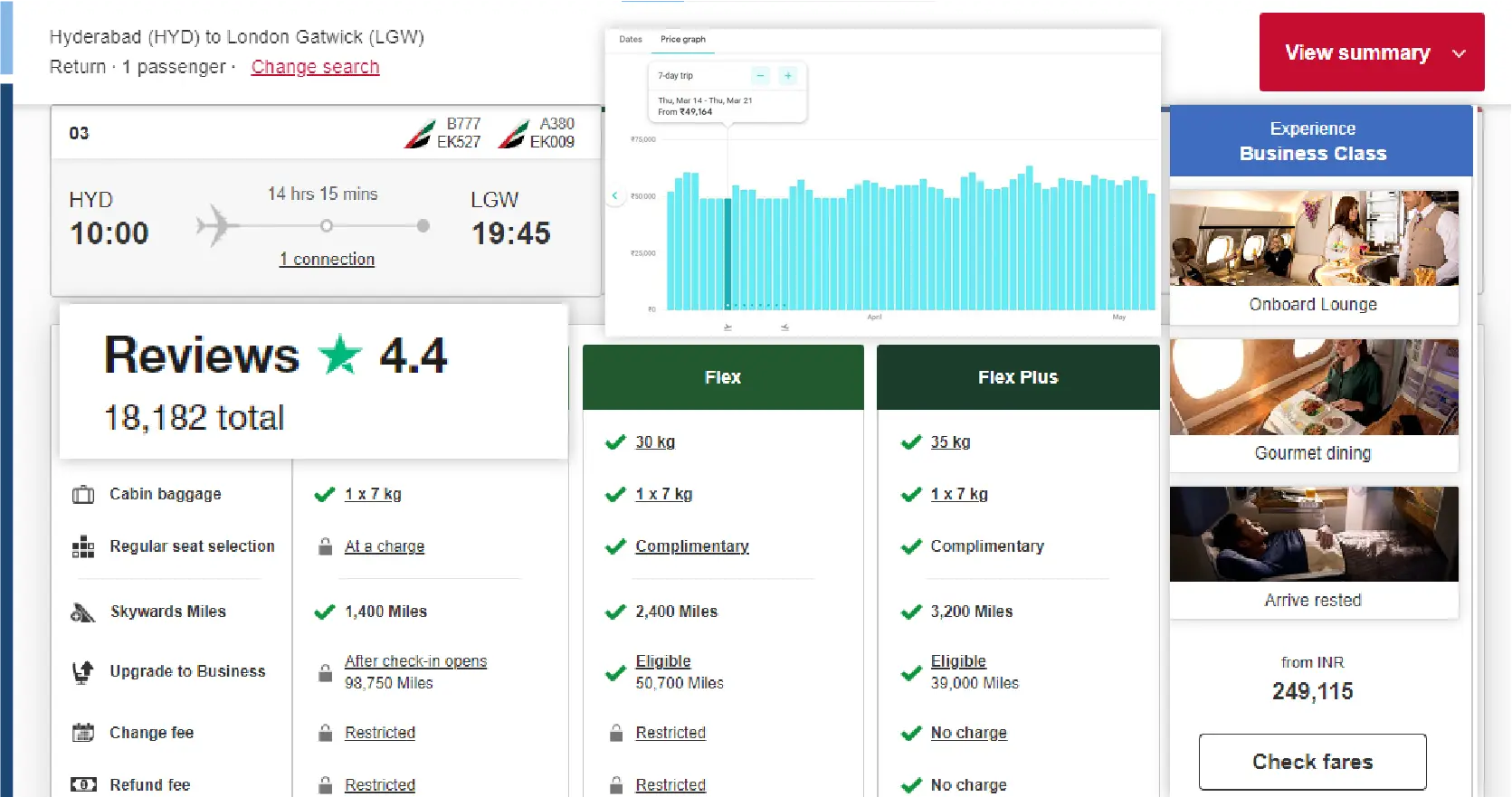
In the ever-evolving travel industry, access to accurate and real-time data is paramount. Scraping Skyscanner flights data offers a wealth of opportunities for travelers, businesses, and analysts alike. Here’s why collecting data from Skyscanner is crucial:
Real-time Price Monitoring
Travelers constantly seek the best deals, and prices can fluctuate significantly within short periods. By scraping Skyscanner flights data, users can monitor these price changes in real-time, ensuring they secure the most cost-effective travel options. This data can help in booking flights at the lowest prices, saving money and maximizing travel budgets.
Competitive Analysis
For businesses in the travel industry, understanding the competition is vital. Skyscanner data collection enables companies to compare prices and offerings from various airlines and booking platforms. This information can be used to tailor competitive pricing strategies, enhance service offerings, and gain a significant edge in the market.
Trend Analysis
Historical data is invaluable for identifying trends and predicting future patterns. By creating comprehensive Skyscanner datasets, analysts can study past price trends, peak travel times, and popular routes. This analysis can inform marketing strategies, promotional campaigns, and inventory management, leading to more informed business decisions.
Personalized Travel Plans
Travel aggregators and travel app developers can use web scraping flight data to offer personalized travel recommendations. By analyzing user preferences and historical booking data, these platforms can suggest the best travel plans tailored to individual needs. This enhances user satisfaction and boosts engagement with the travel app.
Enhanced Market Research
Businesses looking to expand their offerings or enter new markets can benefit when they scrape flight data. The data provides insights into consumer preferences, popular destinations, and emerging trends. This information is crucial for market research, helping businesses make data-driven decisions and mitigate risks.
Utilizing Skyscanner Scraping API
While web scraping is a powerful tool, leveraging the Skyscanner scraping API offers a structured and authorized way to access Skyscanner data. The API provides reliable and consistent data feeds, ensuring compliance with Skyscanner’s terms of service and minimizing the risk of IP blocking or legal issues.
To scrape travel app data opens up a realm of possibilities for travelers and businesses. From real-time price monitoring to competitive analysis and personalized recommendations, the insights gained from Skyscanner data collection can drive better decision-making and enhance the overall travel experience.
Tools and Technologies for Scraping Skyscanner
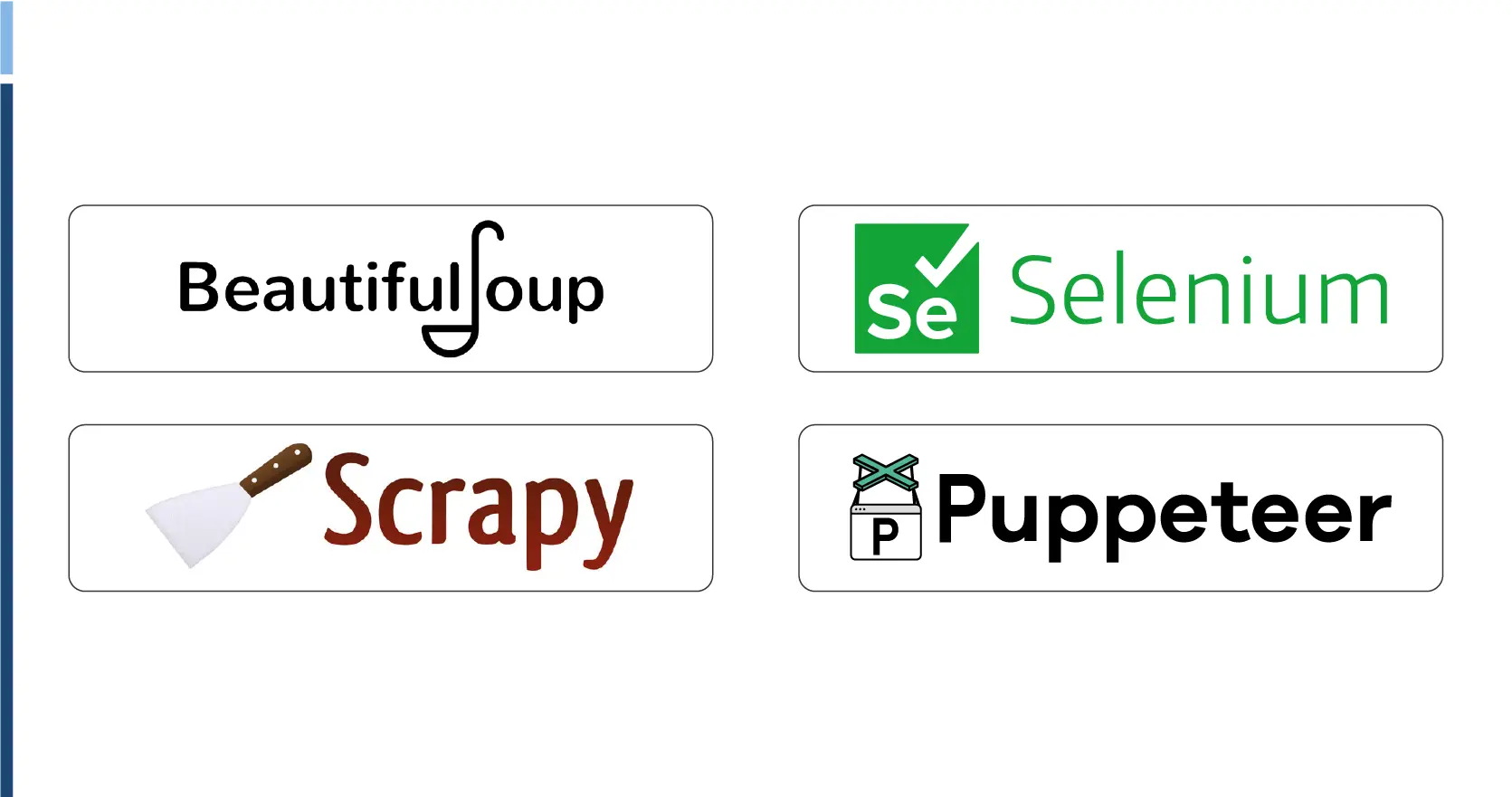
To effectively scrape Skyscanner flights data, you can utilize various tools and technologies:
Python: A versatile programming language with robust libraries for web scraping.
BeautifulSoup: A Python library for parsing HTML and XML documents.
Selenium: A browser automation tool that handles dynamic content.
Scrapy: An open-source framework for web scraping in Python.
Skyscanner API: An official API that provides structured access to Skyscanner data.
Setting Up Your Scraping Environment
Installing Required Libraries
Begin by setting up your Python environment and installing necessary libraries:

Configuring Selenium
Selenium requires a web driver to interact with browsers. For instance, if you're using Chrome:
pip install chromedriver-autoinstallerHere's a sample code to configure Selenium with Chrome:

Scraping Skyscanner Flights Data
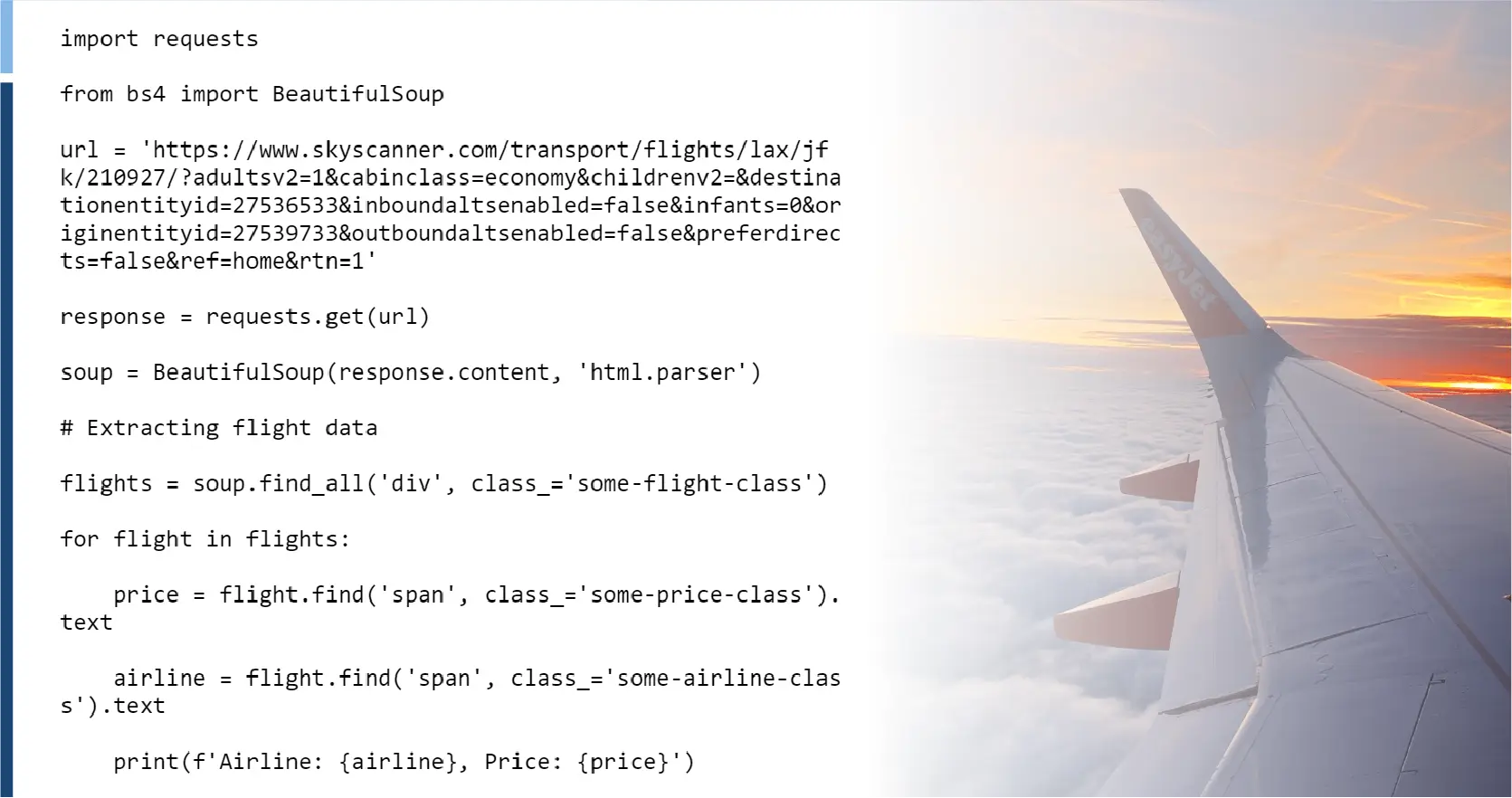
Using BeautifulSoup for Static Content
For pages with static content, BeautifulSoup is an excellent choice:
Using Selenium for Dynamic Content
For dynamic content that requires JavaScript execution, Selenium is more suitable:
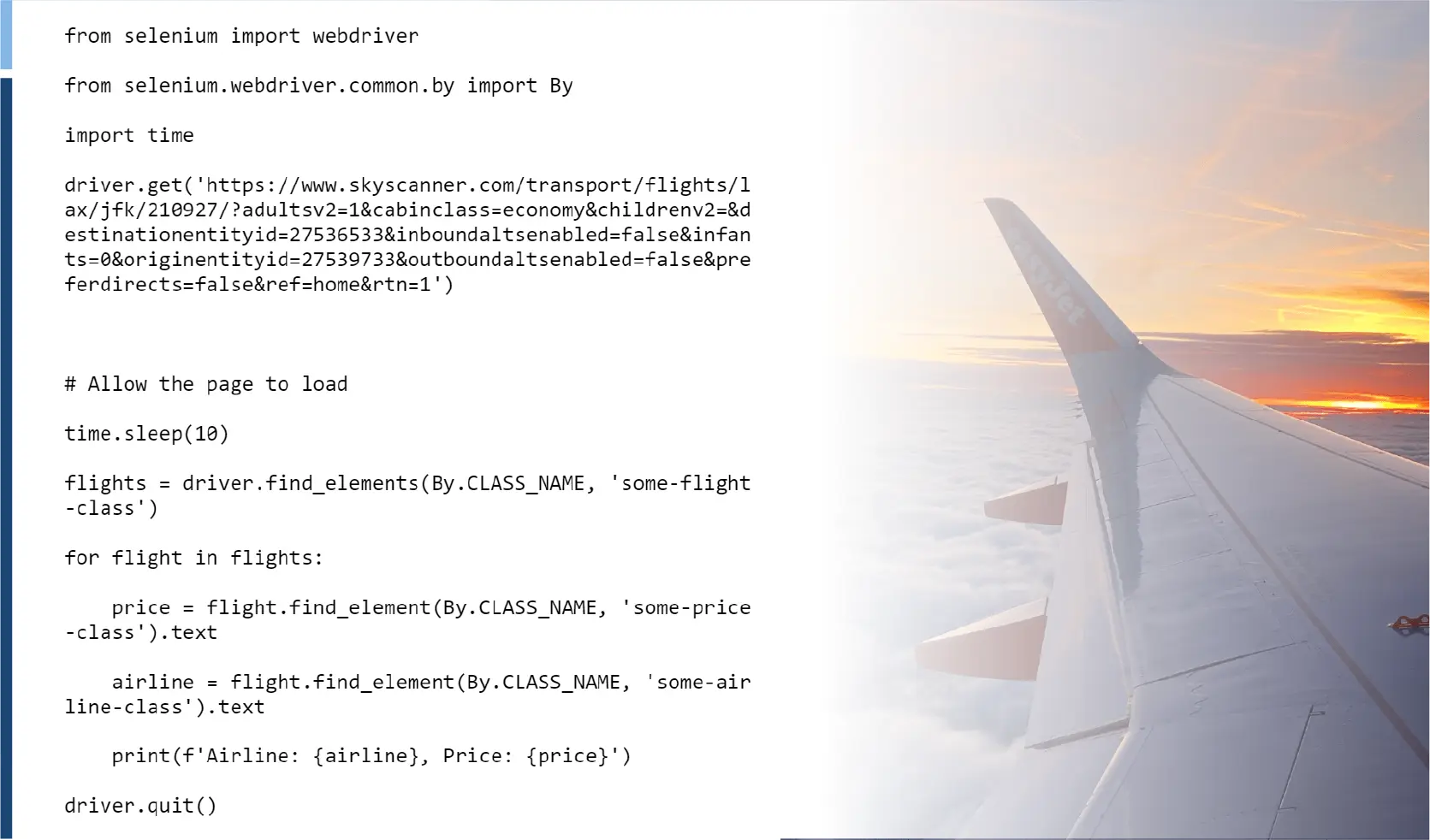
Leveraging Skyscanner Scraping API
Skyscanner offers APIs that provide structured access to flight data. Using these APIs can simplify the data collection process and ensure compliance with Skyscanner's terms of service.
Setting Up the Skyscanner API
Register for API Access: Sign up for an API key on the Skyscanner for Business website.
Install Requests Library: Ensure you have the requests library installed.
pip install requestsMaking API Requests
Here's an example of making a request to the Skyscanner Flights API:
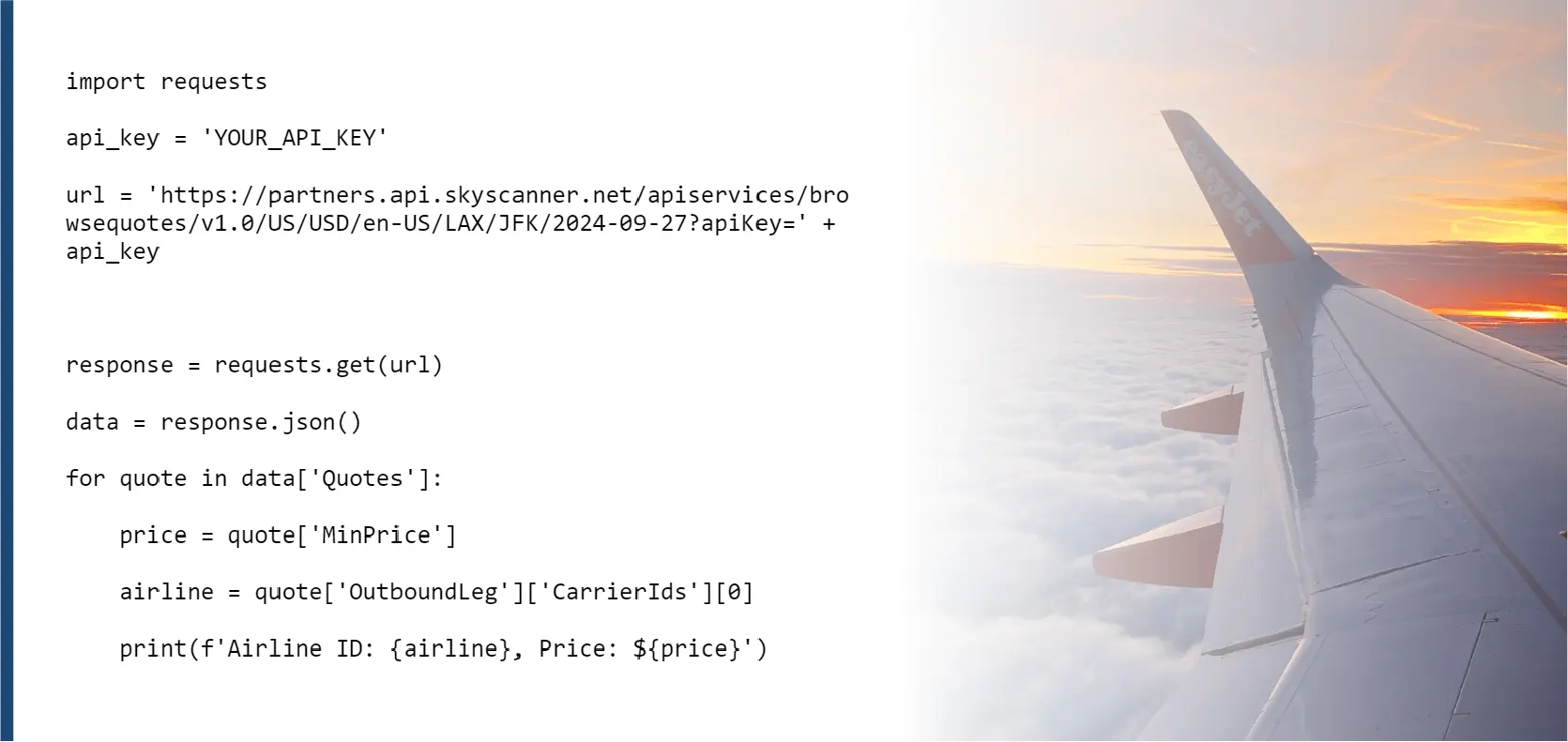
Processing and Analyzing Collected Data
Once you have collected the flight data, you can process and analyze it to create the best travel plans. Here are some steps to consider:
Data Cleaning: Remove duplicates, handle missing values, and standardize formats.
Data Storage: Store the cleaned data in a database for easy access and analysis.
Data Analysis: Use analytical tools to identify trends, compare prices, and predict future patterns.
Creating the Best Travel Plan
Using the collected and processed data, you can create optimized travel plans:
Price Comparison: Compare prices across different dates, airlines, and booking platforms.
Trend Analysis: Identify the best times to book flights based on historical price trends.
Personalized Recommendations: Offer personalized travel plans based on user preferences and budget constraints.
Alerts and Notifications: Set up alerts to notify users of price drops or special deals.
Challenges and Best Practices
Common Challenges
IP Blocking: Frequent requests can lead to IP blocking. Use rotating proxies to mitigate this issue.
Data Structure Changes: Websites often change their structure, breaking scraping scripts. Regularly update your scripts to handle these changes.
Legal Restrictions: Ensure compliance with legal restrictions and terms of service to avoid potential legal issues.
Best Practices
Respect Robots.txt: Always check and respect the robots.txt file of the website.
Rate Limiting: Implement rate limiting to avoid overwhelming the server.
Data Privacy: Ensure the privacy and security of the data collected and processed.
Conclusion
Scraping Skyscanner flights data with travel aggregators offers immense potential for creating the best travel plans by providing real-time insights into prices, trends, and availability. By leveraging tools like BeautifulSoup, Selenium, and Skyscanner's API to scrape travel app data, Travel Scrape efficiently collects and analyzes data to empower your travel planning decisions. Always prioritize ethical practices and compliance with legal guidelines to ensure a sustainable and effective data scraping strategy. Start optimizing your travel plans with Travel Scrape today and experience seamless, data-driven decision-making for your next journey!